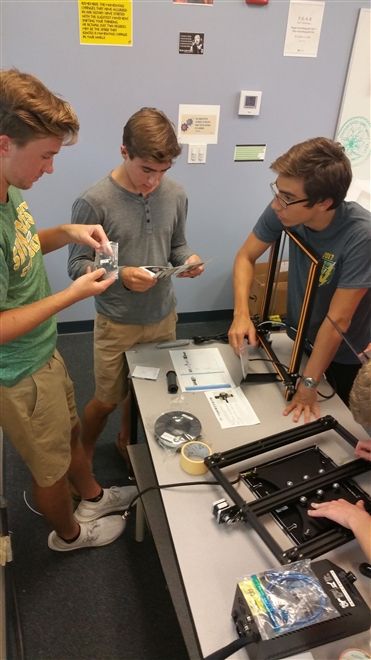

Building 3D Printers
Source/Author: Richard Rho, US Computer Studies Teacher
September 22, 2017
The Upper School class Introduction to Engineering, Programming, and Design Principles, taught by Richard Rho, focuses on problem solving. Concepts and approaches are introduced such as design thinking, the engineering design process, iterative design, and others to help guide students through their problem solving. They also learn to integrate other essential skills such as CAD, programming, and physical computing to demonstrate how their abilities can be enhanced by having this type of knowledge. It is in this way that students can connect with the platforms that professionals are using in the field.
At a young age, Shorecrest students begin to understand how to 3D model for printing on the 3D printers in our Media Center, and the Intro to Engineering class recently had a project to take that knowledge a step further - learning how 3D printer works, how to use one, and even how to fix one. Hands-on, project-based learning helps cement these concepts, so the class took on the challenge of building their own 3D printers.
The class was split into two groups, each assigned the task of building a 3D printer that was structurally sound and functional. Students had to use a number of tools to build the exterior structure and connect the various motors and sensors. Meanwhile, Mr. Rho instructed them on what each part was and its functions in relation to 3D printing.
“While I have experience building a number of 3D printers, I'd never built this particular model,” Rho acknowledged. “I was thinking of building one and letting the class build one, but I thought it would be a better learning experience to let two groups build so that they could be more hands-on in the experience and my role could be that of the guide. It would keep everyone more engaged as well as encouraging more questioning as to how the printer was put together.”
After connecting all of the different components together, students finished their printers by leveling the print bed and running a test print. One of the groups noticed their plastic from the printer was not being extruded directly onto the print bed. While they had to re-do their leveling, it was a great learning experience for both groups [see video clip].
“We all got to experience what happens when the accuracy is not precise, and that was a valuable learning moment for the students. They learned that the slightest offset could cause such a big change in the printing capability as well as quality,” explained Rho. “It was a great project for our students. Some of them were surprised that they could build their own 3D printer.”
Students ran final test prints on both printers and they were both a success! [see photos]
























